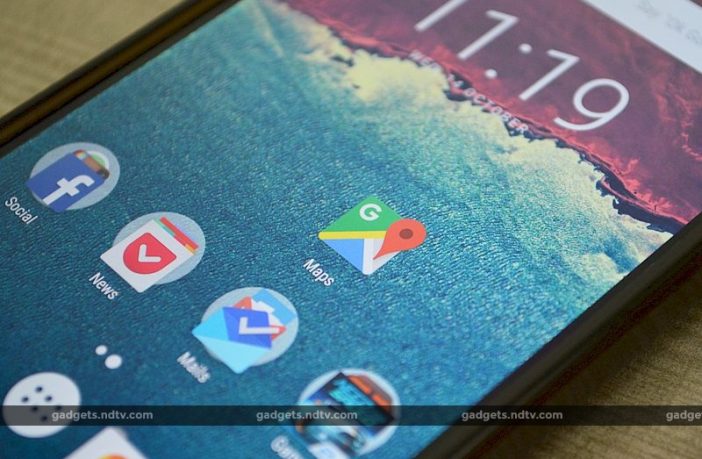
Google has over 50 of its own apps, from what you can see on Google Play, and most of them are must-have apps for any Android user. That’s not a bad record, considering Google Play now has over 1.5 million apps, but apps like Google Search, Clocks, Google Keep, Newsstand, Hangouts, and YouTube are essential. And across all platforms, there’s probably no app as useful as Google Maps.
Google Maps, the search giant’s wildly successful mapping service, has been around for a decade now, first for desktop and then for mobile devices.
For Indian users though, the Maps experience is still pretty hit or miss, despite years of updates and optimizations. Its growth has been overwhelming, but it will still take a few more steps for Google to turn it into something reliably useful for all users here – and indeed, this is also the case in other parts of the world, as you may know first experience. Last week, a woman in Brazil died because she relied too much on the Google-owned Waze app.
My own misadventure with Google Maps can’t be compared to the incident in Rio, but it’s probably an experience that most users – especially in India – have had. I took a few short trips to India recently and found myself reliably lost, thanks to Google Maps. Although the trip was fun and went as planned, Google Maps somehow managed to kill a lot of time when we hit the road. Not only did it show the most complicated routes to reach a destination, but it also missed some restaurants and tried to guide us on a few blocked or seasonal roads, which were not open to motorists.
One of the most common issues we encountered when using Maps navigation was how it displayed the “best” possible route based on traffic. This is a good idea in theory – show me the route that will get me home the fastest, instead of showing the shortest route. But Google’s understanding of traffic in India is still patchy, and 50km detours don’t really save time. Especially when the detour tries to send you on blocked routes, resulting in additional rerouting.
We also learned that the service sometimes fails to show you certain routes; you’ll see the best route for yourself when you zoom in on the map, squint and realize it could have been much more efficient if you were using a road that Google stubbornly ignored, even though it was open and clear. Despite the fact that he has no qualms about trying to send you on your way through private land with the gates closed. This happened with us as we were returning to Delhi from Dehradun. While Google Maps was keen to get us into Delhi via Shahdara (NH 57), which is the northern tip of the city, we entered easily using NH58 (via the Meerut Bypass) without facing any traffic and also saving time.
That aside, it also took us through a 15-20 km unmade road full of potholes on our way to Dehradun. As the road was not maintained, we could not advance at more than 20 km/h. It took us over an hour to cross a 15-20 km stretch. Imagine the frustration of driving at 20 km/h for more than an hour after driving about 400 km at 70-100 km/h on a national road. Google Maps told us to follow an exit and we, stupidly enough, did as we were told, then regretted it. Why did Maps show us this goat track, you ask? There was the least traffic. This is understandable, because who would want to drive on such a road!
![]()
Inside the city we tackled a few cases where we took a wrong turn by mistake and Google Maps found a way to waste two hours by taking us through almost every lane and ravine in the city . Showing half-lane roads or roads with closed gates as part of directions is nothing new to Maps, and I’ve experienced it even in India’s capital, and to be fair, it’s not probably not the app’s fault. Our roads are blocked in no time, and the route could well have been open when Google mapped it. But when the algorithm gives preference to a dirt road over a national road, that’s a problem.
Google Maps also does not list several restaurants and cafes in hilly areas. The service only shows the most popular in the busiest areas. While technology has made life much easier in many ways and made it possible to never talk to people, Google Maps at least isn’t about to. We had to ditch the app altogether, and on searching we found five cool cafes, which had some of the best views of the valley.
I’m not saying Google Maps hurt me on these trips, but it needs to start providing more navigational detail.
Google has recently rolled out numerous updates to its Google Maps. Last month, the search giant introduced the Estimated Time of Arrival (ETA) feature for transportation modes like driving, walking, and biking on iOS. It has also updated its Explore feature, with which you can get organized recommendations from Google Maps based on category.
Regarding navigation, the map service has rolled out a new navigation interface, which replaces the thumbnail view during the navigation search with a larger image showing the routes. Additionally, the company has launched a trial Delhi Public Transport Offline app, designed to help people navigate the capital’s public transport system even without an active internet connection. These are all great features, but the core experience needs some work urgently.
For now though, don’t blindly trust the navigation – zoom in and see if you really are on the “best” route. Trust me on this one.
Check out the latest from the Consumer Electronics Show on Gadgets 360, in our CES 2023 hub.
Tech




